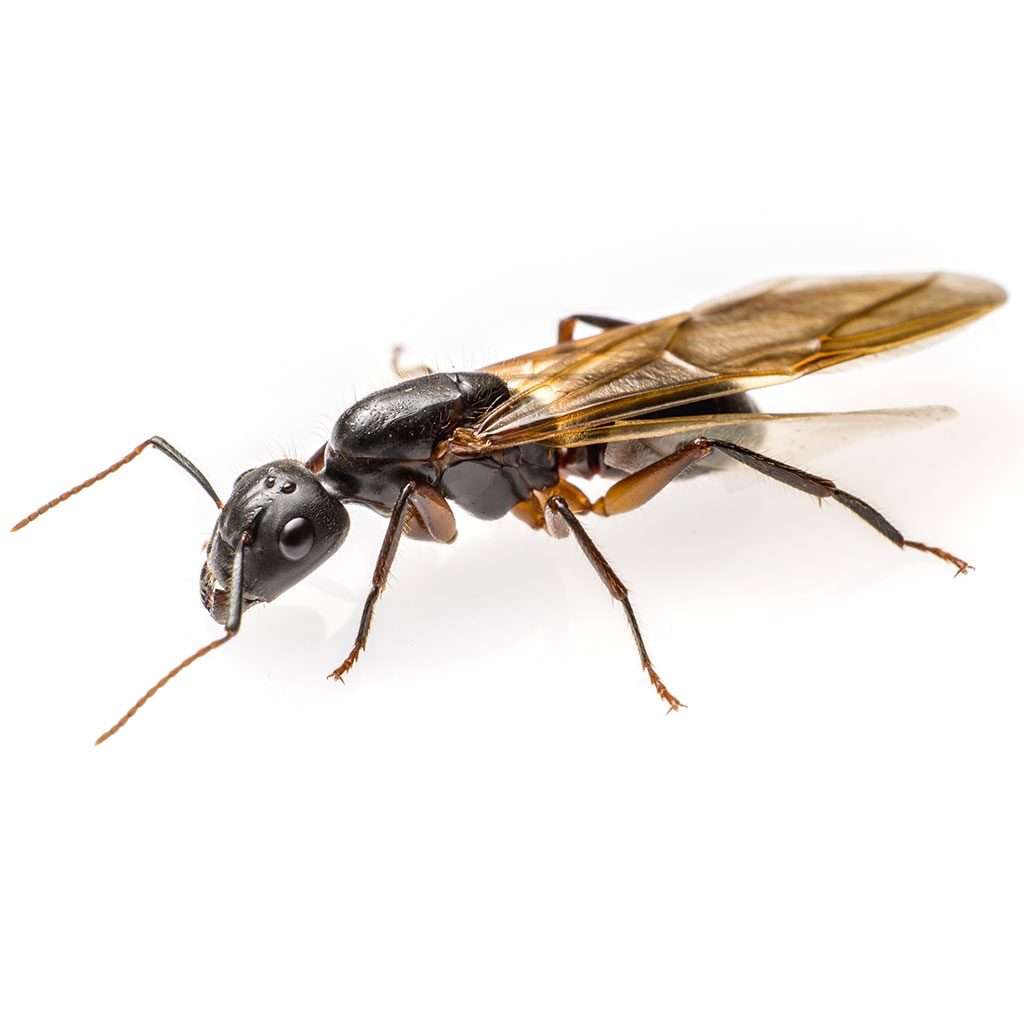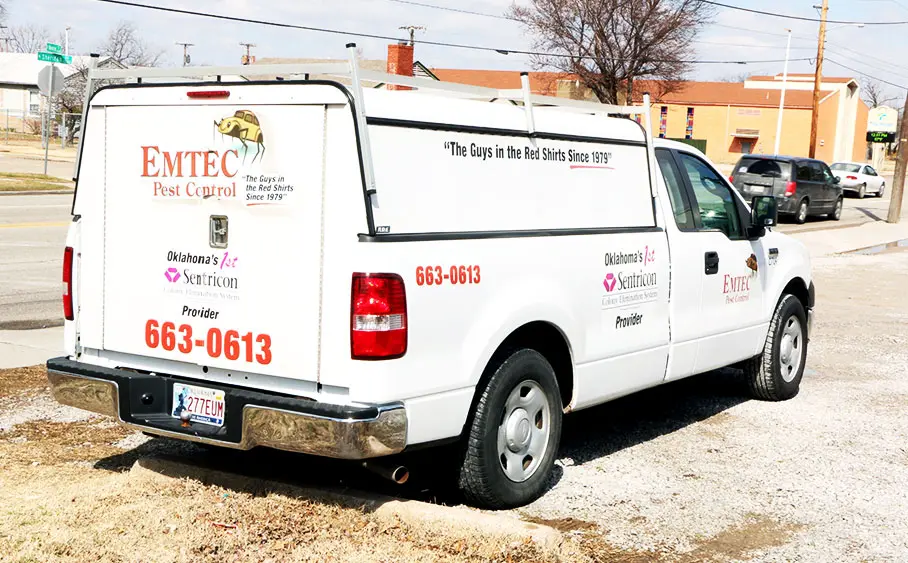Ants and Termites Identification
Identifying Flying Ants and Termite Swarmers
Although there are many differences between termites and flying ants, it can often be hard for the untrained individual to distinguish between the two. The small size of these pests and the shock associated with finding them can often cause a misdiagnosis at first glance. Fortunately, identification of termites and flying ants can easily be achieved with knowledge of the difference between them to provide proper identification and treatment.
Even with the knowledge of the difference and similarities between termite swarmers and flying ants, it can still difficult to identify which pest you are dealing with. With termites hiding for the majority of the existence, homeowners may not even know that their home is slowly being consumed. If you are unable to identify the pest based on appearance alone, other factors must be considered.
If you find a winged pest in or near your home, it is important to approach the situation calmly to determine whether it is a flying ant or a termite swarmer. Knowing the pest you are dealing with is important in providing the most effective treatment possible for the problem. Though both may be responsible for damage to the wood from your home, here are some of the ways you can distinguish between flying ants and termites.

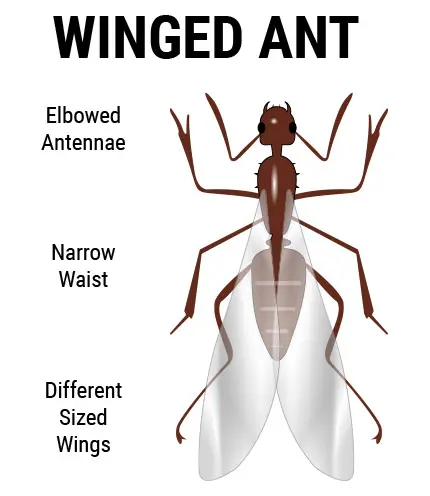
Behaviors
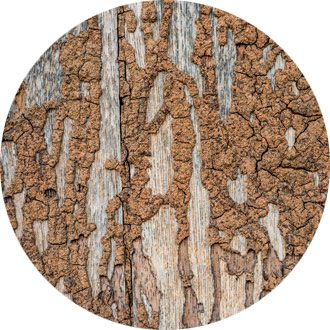
Termite Swarmer
Termites are among the most destructive pests a homeowner could be unfortunate enough to find. With nearly $5 billion in damages annually in the United States alone, these silent pests can wreak havoc on a home when undetected. For this reason, prevention of these pests is often necessary to protect your most valuable investments.
The most common members of the termite colony that are misidentified as ants, or vice versa, are termite alates. Also known as swarmers, this termite caste is usually seen in swarms throughout the spring following periods of rain in the morning. During termite swarms, reproductive males and females will attempt to establish new colonies in or around your home.
Termites are considered social insects because of the organized structure found in their colonies. Each termite colony has a king, queen and various other castes that all work in unison to ensure the survival of the colony. These castes all follow specialized functions and have their own unique characteristics.
One behavior unique to termites and not ants is the construction of termite tubes near termite nests. These mud tubes are pencil-sized tunnels that are usually found around concrete or stone foundations and are composed of a combination of soil and wood. Termite tubes are utilized by colony members to avoid predators or dry environments.
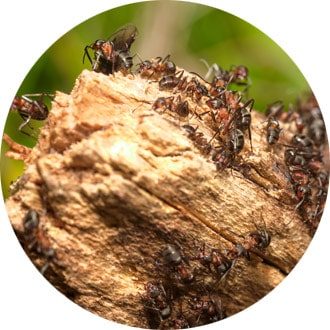
Flying Ant
Although the damage caused by ants isn't as severe as termite damages, the presence of this pest can be unsettling for many homeowners or business owners. Often mistaken for termite alates, ant alates are often just a visible symptom of a larger problem. In many cases, the presence of flying ants in a home often signifies that a colony is already established within your home.
Ant alates, or flying ants, often have the same characteristics as flying termites. However, the physical characteristics of these pests can help determine which you are dealing with. Much like termite swarms, ant swarms can be seen throughout distinct periods during the year depending on species as reproductive ants seek to establish new colonies.
Like termites, ants are social insects and function as a colony to ensure survival. Each ant colony is comprised of individual castes that serve a specific purpose from gathering food sources and bringing them back to the queen to reproducing to establish new colonies. If the queen is eradicated, no new colony members can be produced, effectively resulting in the eradication of the colony over time.
Carpenter ants will often burrow into decaying wood sources to create nests. Stumbling upon this damage around the property will often lead homeowners or business owners to believe that they have a termite infestation although they don't. However, finding the culprit of the damage can help determine the pest by appearance.
Control
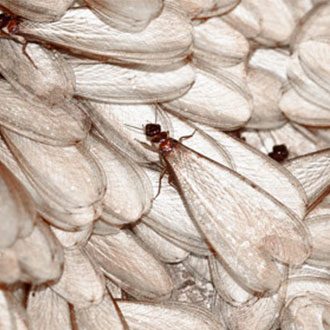
Termite
Termites are an incredibly stealthy and tricky pest to deal with and can survive within a structure for long periods of time without any knowledge of their presence. To guarantee the removal of this pest, treatment options must be completely and consistently effective, otherwise, colonies will continue to thrive in secrecy. To ensure the best outcome possible, Emtec Pest Control has been providing the Sentricon® System for over 20 years with amazing results.
Over time, the Sentricon® System has proven its worth time and time again across millions of properties nationwide including the White House. Not only will it eliminate existing termite colonies, it will provide ongoing monitoring to protect your biggest investments from future infestations. Once the Sentricon® bait stations are installed, your termite control has already begun!
At Emtec Pest Control, we know each termite infestation is different. With over 40 years' experience in termite control and identification, we can provide a unique assessment for your property to develop the termite control action plan that's right for you. You can schedule your free, no-obligation inspection today online or on the phone.
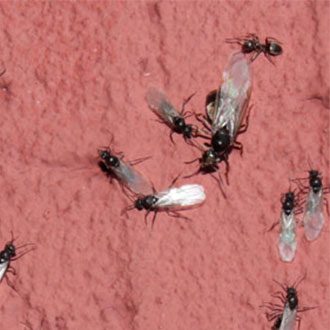
Flying Ant
When spending any extended period of time in Oklahoma, you are likely to run into several species of ants. Unfortunately, the presence of flying ants can provide a whole new set up problems for homeowners or business owners that can't determine if they are flying ants or termite swarmers. In this state, ant control can seem like a never-ending battle, but it doesn't have to when you partner with the professionals at Emtec Pest Control!
At Emtec Pest Control, we believe the best defense against ants lies in superior prevention methods. Though it isn't possible to seal every entry into a home, adequate prevention methods can dramatically reduce the risk of your home becoming an all-you-can-eat buffet for ant colonies. Even if these pesky ants find their way in, we will be here to help you every step of the way.
Regardless of the type of ants you are finding in your home, Emtec Pest Control has the solution. Treatments may include liquid insecticides, baits, granules, dust insecticides or any combination of these. When you call Emtec Pest Control or submit an online contact request, our professional technician will evaluate your unique situation and determine the best treatment option for your home.
Diet
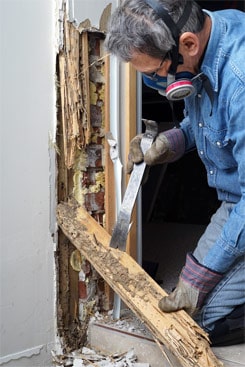
Termite
The diet a termite consists of cellulose materials which can be found in all vegetation, including decaying trees and plants that are dying. However, cellulose can also be found in the building materials used to construct your home or business. For this reason, termites will often be found within the walls of a home feeding on the cellulose materials found in support beams or walls, ultimately weakening these structures.
To digest cellulose, termites rely on organisms that are present inside of their stomachs. These protozoa and bacteria provide a symbiotic relationship by naturally breaking down the cellulose into a usable form of nutrition for their termite hosts. To achieve this, the organisms found within the termite's stomach produce a special enzyme that efficiently breaks down the cellulose material.
Immature termites are not able to actively break down cellulose with their stomach because these beneficial bacteria and protozoa have not yet formed. To counteract this problem, worker termites will ingest the cellulose then feed the digested sugar substance to immature termites through regurgitation. This mouth-to-mouth exchange is necessary for the survival of a termite species and has proven to be incredibly effective.

Ant
Depending on the species of ant in question, the diet habits of this pest can vary substantially from motor oil to other insects. However, most ant species are considered omnivorous and are opportunistic feeders, relying on the smallest food morsels no matter what they may be. On the other hand, some ant species are strictly carnivorous and hunt and kill other insects, lizards, and spiders or scavenge for previously incapacitated prey.
Although common misconceptions would have you believe that the carpenter ant eats wood material like termites, wood damage from this pest is actually attributed to their unique nesting habits by burrowing into wood sources. Carpenter ants are known to forage for food great distances from their original colony and will often produce satellite colonies to achieve this. Indoors, the carpenter ant will generally feed on pet foods, meats and other sugary or sweet substances that may be available.
When ants infest a home, they will typically eat anything that a human would, including small morsels of food or spilled liquids that may be present. It is not uncommon for a new queen to feed her first larvae, and self, extra eggs for the nutrients they provide to the establishing colony. When worker ants find a food source, they will store it in their stomach as a liquid form to regurgitate for members of the colony upon returning.



